Nearly 1,000 people filled the streets of Dublin on September 14 2024, following the Blessed Sacrament. The event, a highlight of the ‘Walk The Cross’ pilgrimage, saw pilgrims journey over 100 kilometres from Clonmacnoise to the capital, culminating in a procession that held powerful witness to Irish Catholicism.
The pilgrimage commenced at the historic monastic site of Clonmacnoise, where the faithful gathered for Mass. Central to the journey was the cross, a unifying symbol for the pilgrims as they travelled through towns and villages, offering prayers and hymns for Ireland’s spiritual renewal.
“It’s all for God’s glory. And it’s for our country. It’s for our children. It’s for the Church. It’s for the unborn. It’s in reparation for sins. It’s for blasphemies against the Sacred Hearts. Jesus has a big plan for Ireland,” declared Anto Crossey, the man behind ‘Walk The Cross,’ in an interview with this paper.
Impact
As the procession made its way through rural Ireland, its numbers grew with pilgrims joining at each stop. By the time they reached Dublin, anticipation had built to a peak. Escorted by the Gardaí, the group made its way through the city. For the first time since the pilgrimage started on September 11, the Blessed Sacrament led the way. Beginning at St Peter’s Church in Phibsboro, the procession moved through the bustling O’Connell St. and along Henry St. before arriving at St Mary of the Angels Church. Bystanders, struck by the sight, responded with deep reverence – many knelt in prayer or made the sign of the cross, visibly moved by Christ’s presence in the heart of the city.
“It was to show that Irish faith is still alive,” said Karen, one of the event organisers. “The procession was vibrant, full of joy, and it gave people so much hope, joy, and peace in this troubled world.”
Karen emphasised that the event was more than just a procession. It was a public declaration of enduring faith in a nation where Catholicism has faced significant challenges in recent years. “We wanted to be a witness, to say: the faith is still there. It’s not an exclusive club. People can have their faith back. It’s there if they want it.”
It was a true witness through the streets of Dublin. You could see the joy in their hearts, people really proud of their Catholic faith”
The pilgrimage’s emotional crescendo came with the closing Mass at St Mary of the Angels, celebrated by Fr Brendan Kiely. The church overflowed with faithful, with many of them standing outside to be part of the moment. The melodies of the Uilleann pipes filled the air, blending Ireland’s rich cultural heritage with the spiritual significance of the occasion.
Karen was deeply moved by the public’s response to the procession. “The reaction was incredible. People on their knees, blessing themselves as we passed. It was a true witness through the streets of Dublin. You could see the joy in their hearts, people really proud of their Catholic faith.”
The inspiration for the Eucharistic Procession through Dublin as part of ‘Walk The Cross’ had its roots in Medjugorje, where Karen’s husband, Brian, felt a divine calling during adoration to walk from Clonmacnoise to Dublin and conclude with a Eucharistic Procession. He reached out to Anto Crossey, asking if this could be the route for ‘Walk The Cross’ 2024.
Anto took time to pray over it. Later, a woman from Northern Ireland confirmed the idea while Anto was at Knock, saying she too had felt a similar spiritual calling. “It was the confirmation we needed,” Karen explained.
As the pilgrimage took shape, so too did their resolve to bring the Eucharistic procession to Dublin. “People are hungry for it, asking us to do it annually, some even wanting it four times a year,” Karen said.
This year’s event built on a similar pilgrimage in 2023, where participants walked from each of Ireland’s four provinces to Clonmacnoise for Mass. “Last year, we walked 33 miles from each province into Clonmacnoise, representing Leinster, Connacht, Ulster, and Munster. This year, even more people joined. We had worshippers standing outside the church, unable to get in,” Karen noted.
Reflection
Reflecting on the procession, Fr Brendan, during the post-procession Mass, said, “It’s enlightening and encouraging for me as a priest to witness your faith… Heaven accompanied us all yesterday, especially as we carried Jesus through the troubled streets of Dublin. It was spiritually uplifting, and everyone felt the graces emanating from the Blessed Eucharist.”
Now that the procession has ended, those involved are seeking guidance on what comes next. “This is all part of the Lord’s plan. We don’t move ahead of Him. We’re praying now about where to go next. This year, we were called to Dublin, and it was a true witness of faith,” Karen said.
The Eucharistic procession left a permanent mark on both participants and the city itself. What began as a pilgrimage to revive the Catholic spirit among the Irish became a powerful public witness of faith in Dublin, proving that despite decades of secularisation, Catholicism remains deeply intertwined with Ireland’s identity.
Photos: John McElroy
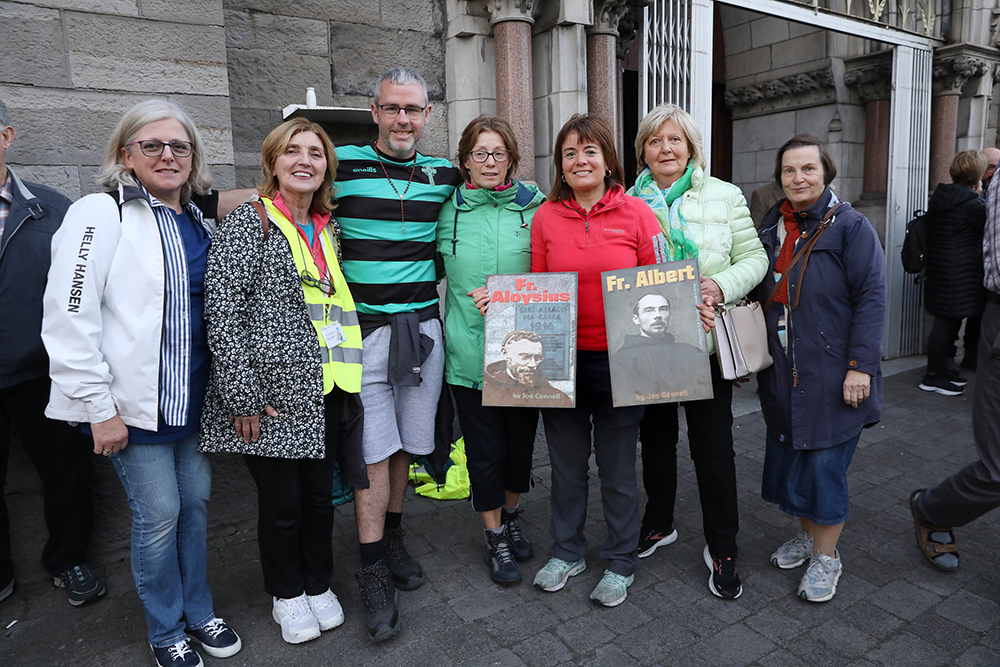
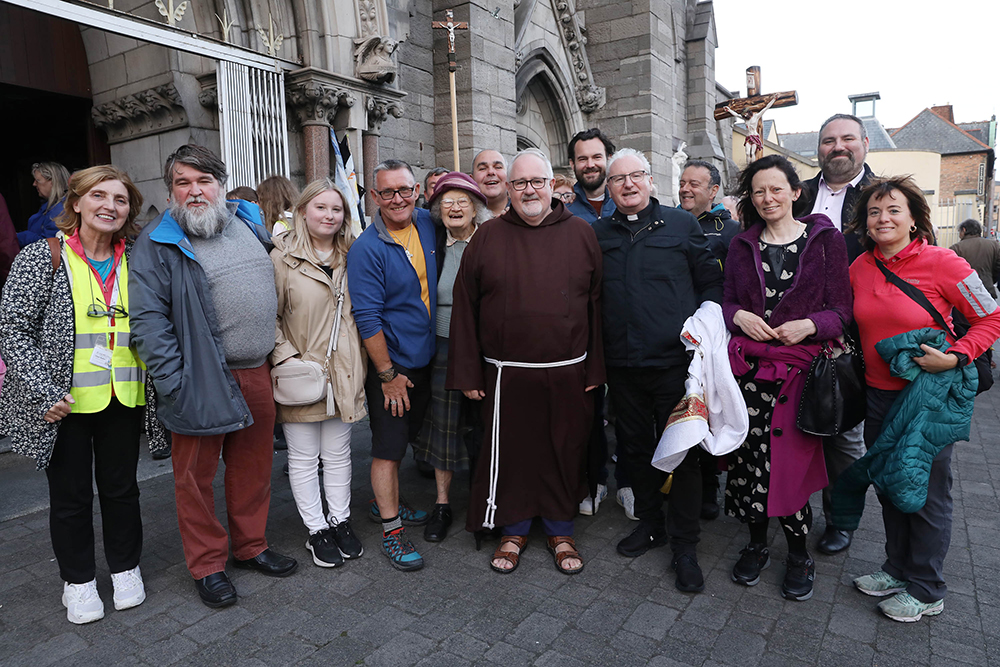
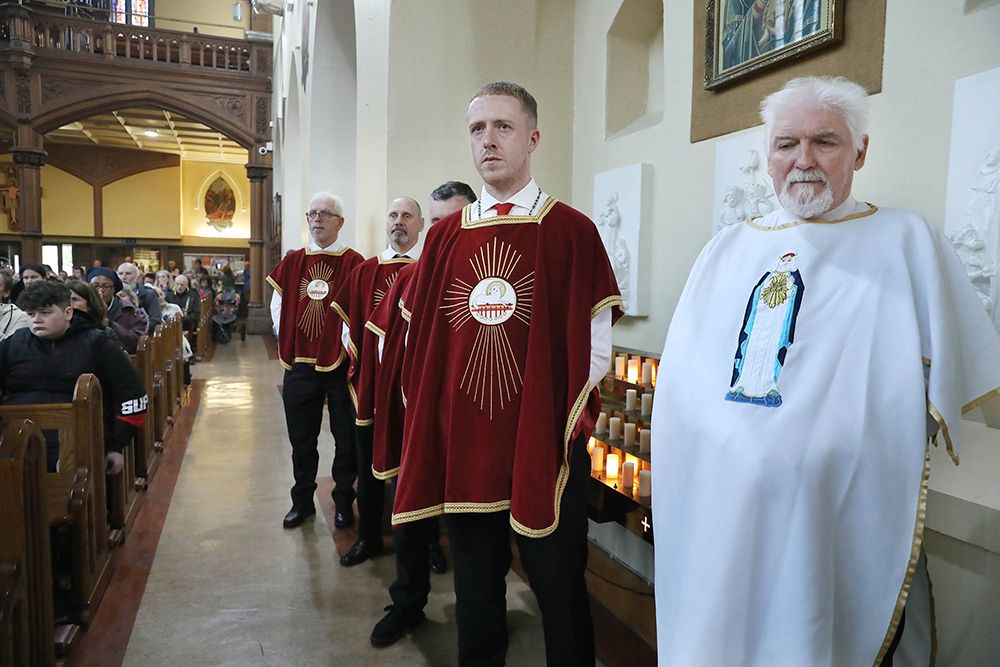
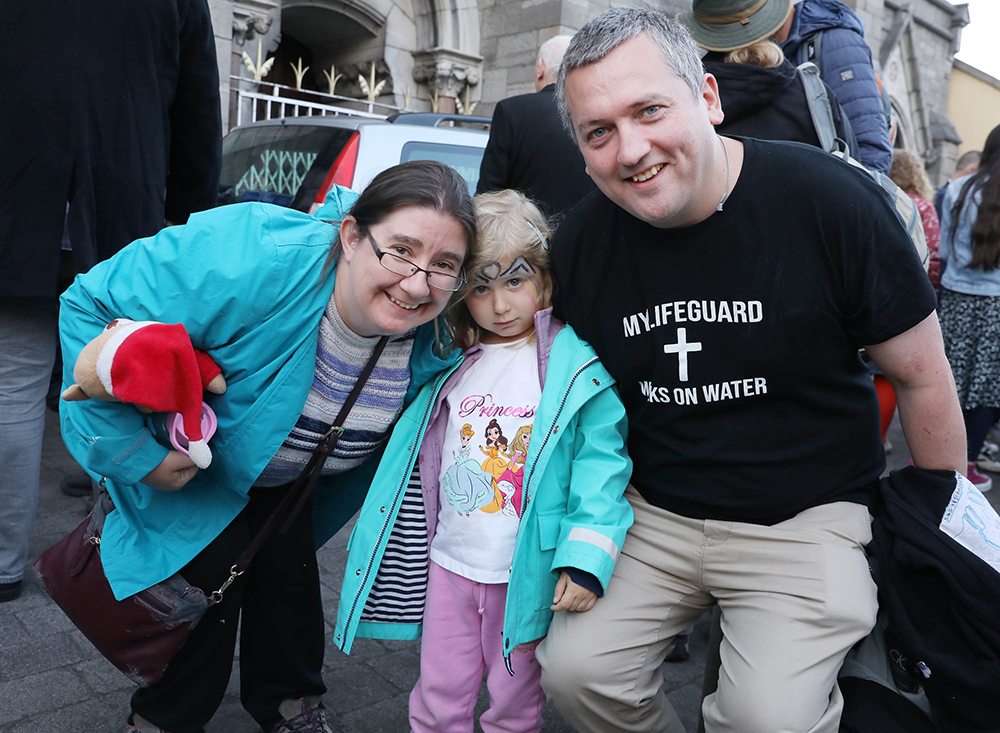
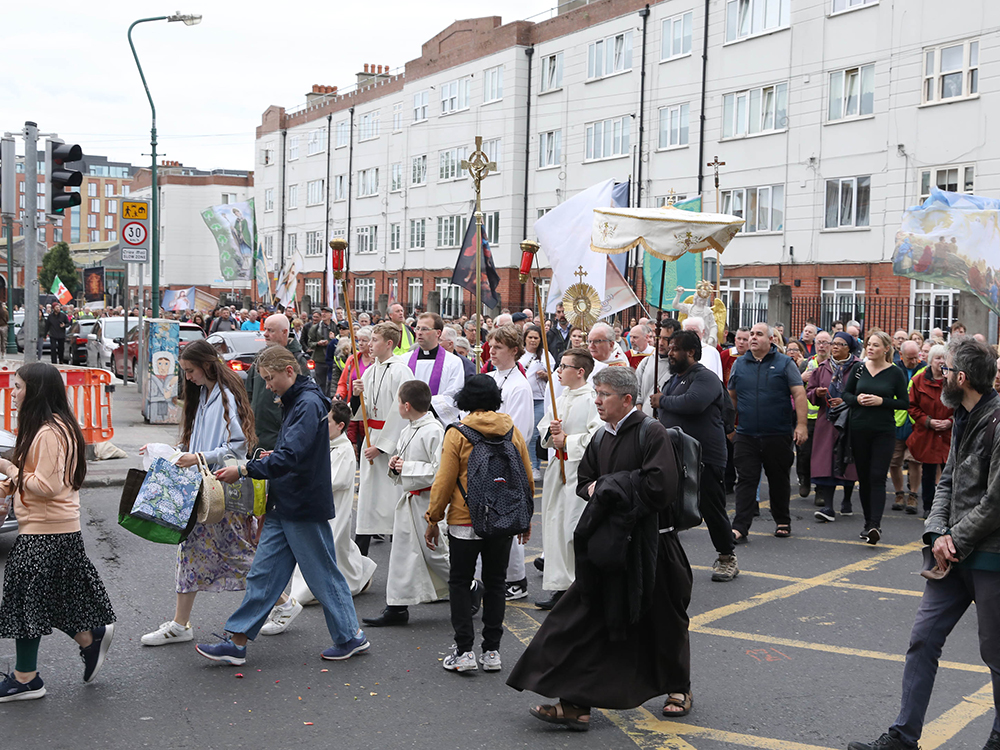
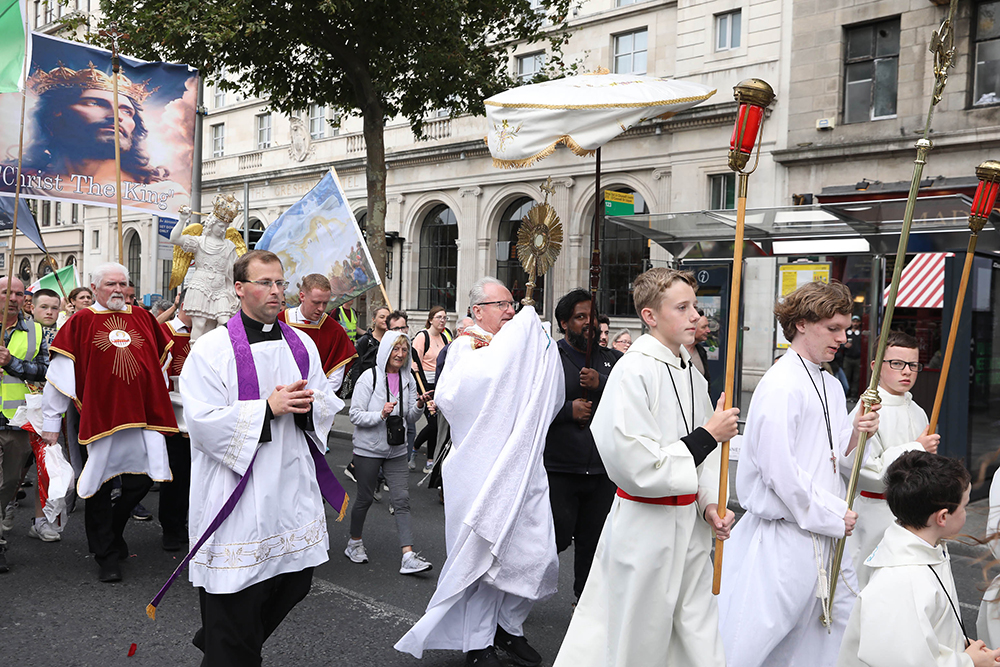
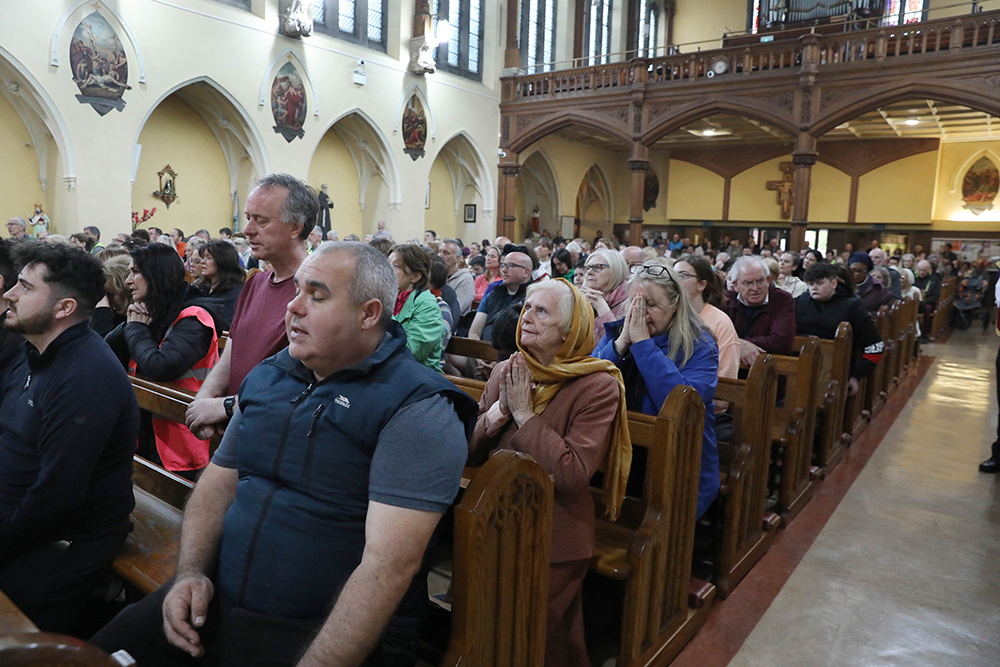
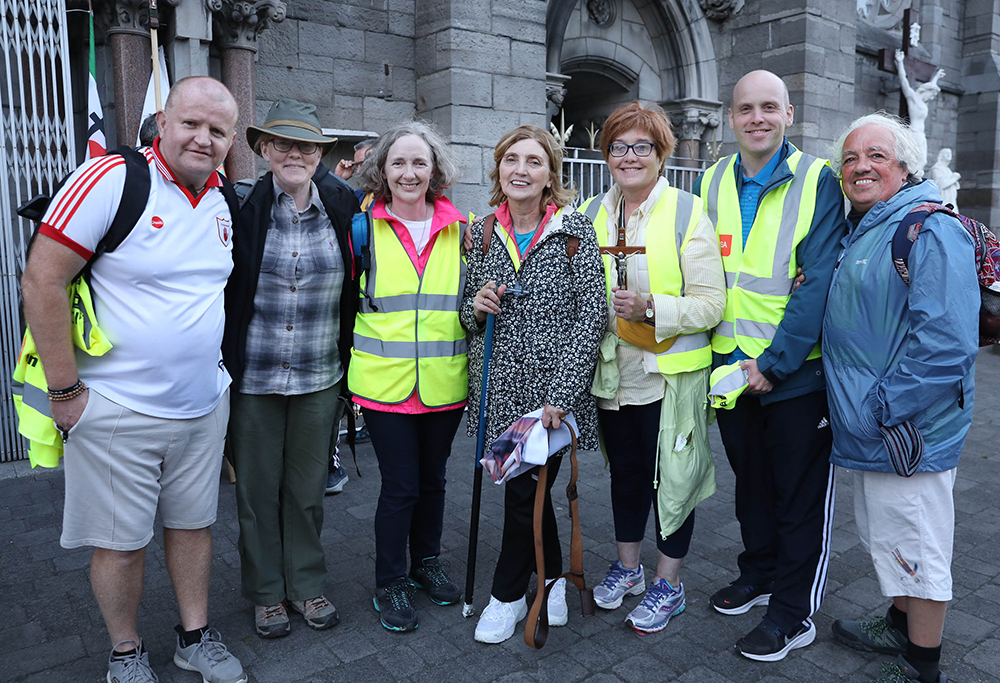
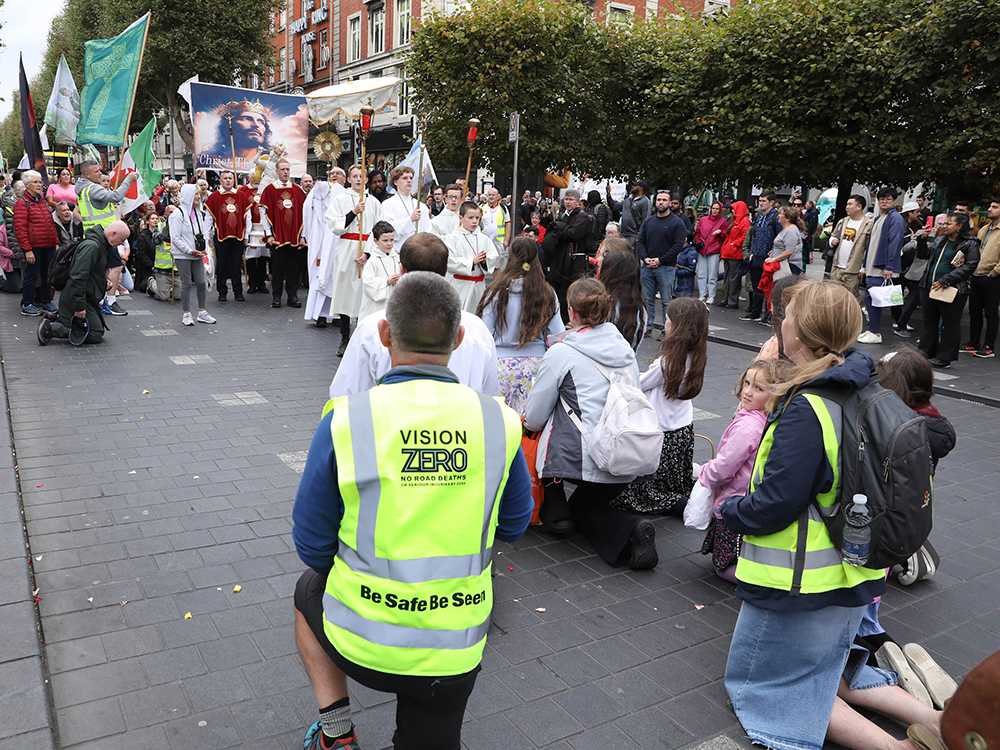
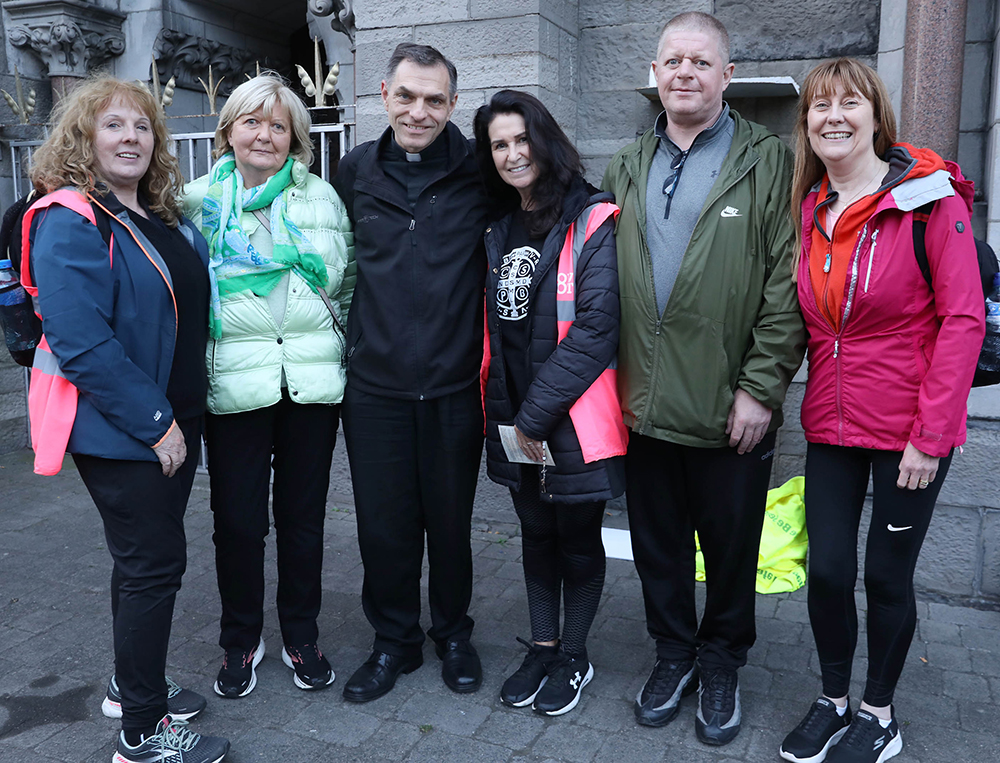


 Renata Milán Morales
Renata Milán Morales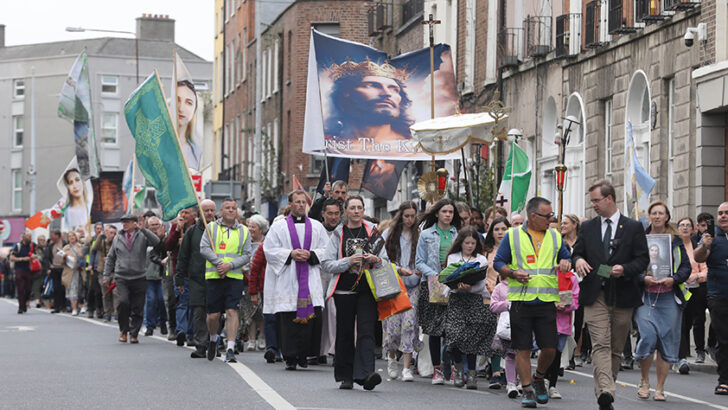 Fr Brendan Kealy carrying the monstrance through the streets of Dublin on the final day of Walk The Cross and Eucharistic Procession, September 14. Photo: John McElroy.
Fr Brendan Kealy carrying the monstrance through the streets of Dublin on the final day of Walk The Cross and Eucharistic Procession, September 14. Photo: John McElroy. 